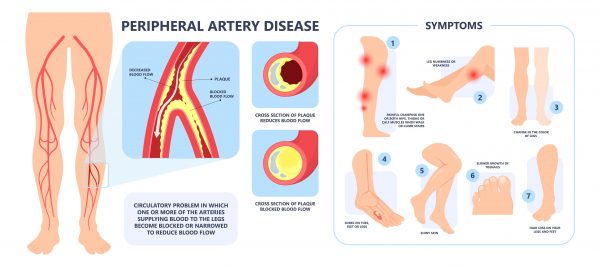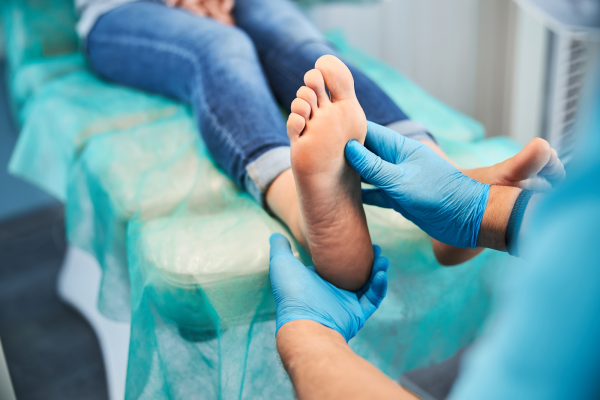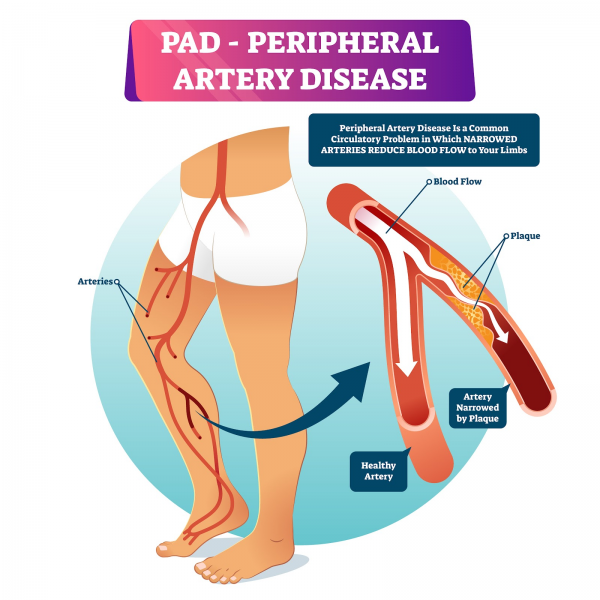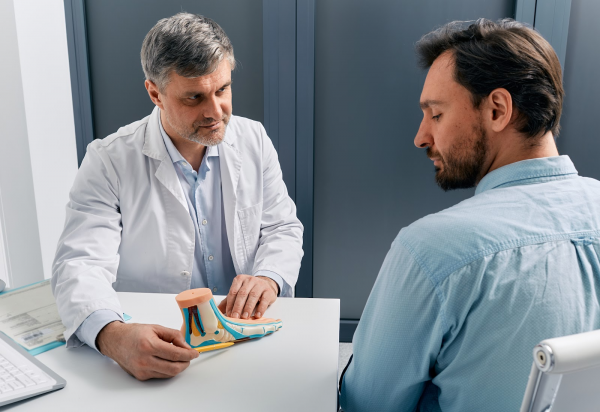You’ve been enjoying a walk, maybe along the beach or just through your neighborhood, when your calves start aching. Or maybe you’ve noticed that your feet feel cold, even in Florida’s summer heat. Sometimes the pain eases when you stop moving, but it keeps coming back. Is this just age catching up with you, or something more?

Those symptoms could be linked to Peripheral Artery Disease (PAD), a common but often overlooked circulatory condition. PAD doesn’t just affect your heart and arteries. It often shows up in your feet first. Understanding the signs is key to protecting your health and keeping you moving comfortably.
Read on and discover what PAD is, how it impacts your feet, the symptoms you shouldn’t ignore, and why early diagnosis with the help of a podiatrist can make all the difference.
What Is PAD and Why It Matters for Your Feet
Defining Peripheral Artery Disease
Peripheral artery disease happens when plaque builds up inside the arteries, narrowing the passageways that deliver blood to your limbs. It’s essentially a form of atherosclerosis, the same process that can lead to heart disease.
Unfortunately, your risk of getting PAD increases if you have risk factors, such as diabetes, smoking (in the past or now), high blood pressure, high cholesterol, or chronic kidney disease.
PAD restricts your circulation, so the tissues in your lower legs and feet don’t get enough oxygen and nutrients. That’s why people with PAD often notice problems “from the ground up.”
In simpler terms: PAD = poor circulation, and poor circulation = unhealthy feet.

How PAD Affects the Feet
Your feet and toes are far from the heart, so they often show the earliest warning signs of PAD. Reduced blood flow can:
- Slow down healing, meaning a small blister or cut may linger for weeks.
- Damage nerves and muscles, leading to numbness, weakness, or pain.
- Make your feet feel colder than the rest of your body.
Sometimes, those subtle changes in your feet are the very first sign of a bigger vascular problem.

Spotting the Signs: Symptoms of PAD in Your Lower Legs and Feet
Peripheral artery disease in the feet can mimic normal aches and pains, but there are a few red flags, aka PAD symptoms, you shouldn’t ignore.
1. Painful Walking
One of the hallmark signs of PAD is pain or cramping that shows up when you’re moving but fades when you stop. Doctors call this claudication, a fancy word for muscle pain in the legs or feet that happens when you walk but eases with rest.
Unlike simple muscle soreness, this pain returns predictably with activity. If a stroll leaves you limping but sitting down brings quick relief, circulation could be the culprit.
2. Physical Changes in the Feet and Legs
PAD often causes visible changes, including:
- Hair loss on your legs and feet
- Shiny or thin skin
- Toenails that grow more slowly or look different
- One foot feeling noticeably colder than the other
3. Non-Healing Sores and Ulcers
One of the most serious signs of peripheral artery disease in your feet is a sore, cut, or ulcer on your foot that doesn’t heal. Because blood flow is restricted, the body can’t repair the tissue. These wounds carry a high risk of infection and need immediate medical attention.
What to Do Next: Your Path to Diagnosis and Treatment
The Importance of a Podiatrist
If your feet are sending warning signals, a podiatrist is one of the best doctors to see first. Podiatrists specialize in lower limb health and understand how circulation issues show up in the feet. They can perform a quick, non-invasive test called an ankle-brachial index (ABI) to compare the blood pressure in your ankle to that in your arm. This helps determine whether PAD is affecting your circulation.

Treatment and Management
Catching PAD early gives you the best chance to manage it with lifestyle changes and conservative treatments. Depending on your diagnosis, your care plan may include:
- Regular exercise to improve circulation
- Quitting smoking (if applicable)
- Managing blood pressure, cholesterol, or diabetes
- Dietary adjustments to support vascular health
In more advanced cases, podiatrists work closely with vascular specialists to coordinate medications, minimally invasive procedures, or surgery if needed. The key takeaway: early attention prevents bigger problems later.
Don’t Let Your Feet Tell a Story of Delay
PAD is serious, but it’s manageable—especially when caught early. Your feet aren’t just carrying you through life; they’re often the first to signal when something deeper is wrong.

If you’ve noticed leg pain when walking, cold feet, or slow-healing sores, don’t brush it off as “just getting older.” Those symptoms deserve attention.
Your next step is simple: schedule an appointment with the Foot & Ankle Group. We’ll help you get answers, perform the right tests, and keep you moving forward with confidence
Categorized in: Blog
Comments are closed